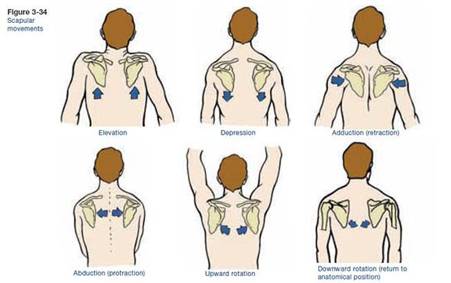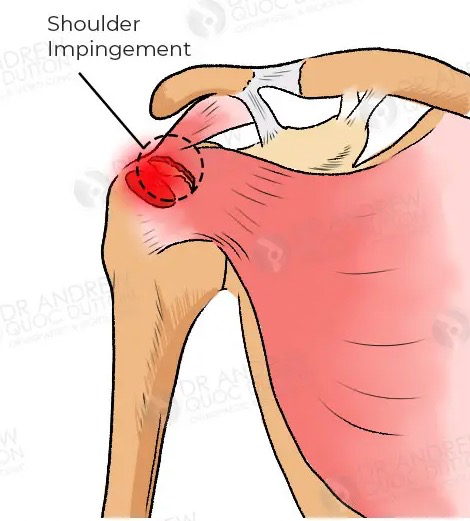What are vertical pull exercises?
Vertical pull exercises are those which focus on pulling up and down – exercises pulling in the vertical plane. The most obvious of these is the pull-up.
A vertical pulling exercise typically focuses on lats, traps, biceps, and the rear delts – areas most people are weak in. These are also areas that build a silhouette and have a wide range of roles in how you move. These exercises typically focus on scapular retraction and depression – moving the shoulder blades back and down.
This isn’t the same as horizontal pulling exercises, which we don’t talk about in this article, but will in the future.
Why do you need to train vertical pulling exercises?
The real question is why would you NOT train the vertical pull?
It’s one of the simplest and most important ways to round out your training while you hit the other areas. You should be training all the movements your body can perform.
Any vertical pulling exercise incorporates a wide range of different muscles and muscle groups. Exercises like the pull-up are known as the ‘deadlift of the upper body’ for the sheer range of muscles they train.
Very few things compete with the bang for your buck that you get from vertical pulls, and they’re some of the most human exercises.
Great carryover
The carryover of vertical pull exercises to other important exercises is also huge.
Building strength in the lats and upper back contributes to deadlifts, presses, horizontal pulling exercises like barbell rows, and then smaller areas of strength like the grip and the biceps. It also serves as a great basis for stability in the bench press and military press.
Important undertrained muscles
The muscles involved in vertical pulling exercises are simply some of the most important in the body. This is only exaggerated by the fact that they’re some of the most common sites for weakness.
Lats, lower traps, grip, and rear delts are typically the areas that let us down. That means a serious hole in your development – as well as a weaker silhouette and higher injury risk in weak ranges of motion.
Strengthening your weak links is the fastest route to results and – for most people – that means building a stronger vertical pull. Whether it’s lat pulldowns or just resistance bands, they add a lot to your workout routine.
Combatting other demands
The vertical pull is a way to combat the excessive demand that might be placed on the shoulder from the combination of vertical pressing and horizontal pressing. This imbalance is super common in those who enjoy the bench press but never row, pull up, or practice their face pulls.
Excessive demand on joints from one side can really cause problems like poor joint spacing, impingement, or bursitis. The shoulder has the largest range of any joint, but that means it also needs the strongest muscular stability and control.
What are the best vertical pull exercises – and why?
1. Scaption: The Scap Pull Up And Reverse Shrugs
Scaption is the name we give to a few types of basic vertical pull and shoulder blade control exercises. Training these basic patterns helps you control the shoulder blades and build better vertical pulling strength, even as a warm-up.
Prone scaption is one way to do this, building control around the blades of the shoulder. It’s a great warm-up option for opening up the chest and keeping your shoulders healthy.
Scap pull-ups and reverse shrugs are another good option. They are a simple way to train the movement patterns and train the starting position of the pull-up.
The reverse shrug is the same as the scap pull-up, but using a lat pulldown machine where you don’t have to start you’re your whole body weight.
Better scaption means better performance in all your vertical pulling exercises, so make sure you’re putting effort into unlocking those muscles and getting your shoulders moving.
2. Pull Up
The pull-up is the universal vertical pull. It’s one we’ve all seen from Rocky montages to bodyweight workout videos on YouTube.
The pull-up is basically the most effective vertical pull exercise but also quite challenging. Beginners can start with banded pull-ups or an assisted pull-up machine to build strength and confidence. Once you can perform a single pull-up, you should start using rep goals: perform a target total-rep number in as few sets as possible.
Eventually, you can even add weight to pull-ups to make them more challenging and effective – building a stronger back and arms.
3. Chin Up
The chin-up is just like the pull-up but with more bicep involvement. This makes it easier, but it also makes it a great way to specifically train your biceps while also strengthening your whole back.
The chin-up is an easier alternative and can progress faster, which may make it a great place to put your focus for a few weeks or months before doing normal pull-ups. It’s easier to do but still builds all the same muscles, making it a great accessible alternative to the pull-up.
4. Lat Pulldown
The lat pulldown is like a pull-up for people who can’t do pull-ups. It’s a cable-resisted alternative to the pull-up that is easy to scale and uses cable tension for constant resistance. These features make it easy to customize and fit your strength level.
It’s also easier to adjust the progression since you have a number to put on it and cable machines may offer 5-10lbs increments. Lat pulldowns are a great ‘finisher’ after your back workout for more advanced trainees.
5. Single-Arm Lat Pulldown
This is similar to the lat pulldown, but with the crucial difference that you’re not using a fixed bar. Using one or two single handles connected to different weight stacks is a way to massively improve shoulder stability training and the natural movement of the shoulder and lat.
Single-Arm Lat Pulldowns are a great choice since they force you to stabilize your shoulder and core while you build vertical pulling strength. Using two at once in a pair of single-arm lat pulldowns trains the shoulders independently while saving time.
This is a great way to level up your vertical pulling exercises and shoulder health.
6. Straight Arm Cable Pulldown
This is a vertical and horizontal pulling exercise that you perform on a lat pulldown or cable machine. The difference is that you’re not bending your arms at all – which makes it less effective in building the arms, but helps you turn on the lats in a way that very few exercises can.
This makes it perfect for building bigger lats, builds carryover to the deadlift and bench press, and is perfect for teaching beginners to use their lats.
7. Band Pulldown Exercises
The Resistance Band Pulldown is a great category of exercise. It’s a light alternative that uses resistance bands and helps build vertical pulling control and technique.
Exercises like the Resistance band straight arm pulldown are excellent for priming the lats and building shoulder health and strength. Meanwhile, you can also use it for 45-degree face pullsand high-angle band pull-aparts.
Using these exercises in a circuit is a great way to either warm up your vertical pulling or as a ‘finisher’ set to squeeze out those final gains!
Conclusion: Our Final Thoughts
Vertical pulls do a lot of things that you should be focusing on:
· Keeping your shoulders healthy
· Building a great V-taper
· Strengthening your scap for all kinds of exercises
· Building a thick, wide back
· Developing neglected muscles
· Rounding out your workout plan
They do more than people give them credit for. Even if you can’t do a pull-up, you can do vertical pulling. We’ve listed 7 of the best vertical pull exercises and they range from beginner (band pulldowns) to elite (weighted pull-ups) – so all you have to do now is get started!





